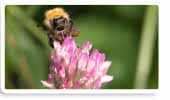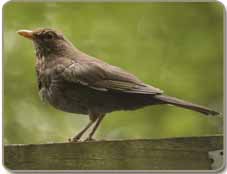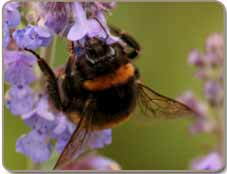UK Conservation and Sustainability

When it comes to conservation, it’s just as important to conserve plant and animal species closer to home as those on distant shores. In addition to our leading work in primate care and welfare, our sanctuary in the south of England also works to conserve UK species in danger from habitat loss: these include the rare lesser horseshoe bat and pearl-bordered fritillary butterfly. Sensitive habitat management techniques allow for local plants, insects, birds and mammals to thrive in the sanctuary’s extensive grounds.
UK conservation aims
- To enhance and manage existing site for important species and to encourage biodiversity.
- To offer education on conservation of British wildlife.
- To work with other organisations to protect local wildlife and promote sustainable living.
- To link global climate change and deforestation issues with local solutions through promotion of sustainable gardening and food production.
How we meet those aims
- By managing our grounds and gardens carefully to enhance and protect the varied habitats therein. We work specifically to safeguard the habitats of the more notable and important species.
- By allowing public access to site and use by school groups to provide information on, and promoting the application of, wildlife gardening.
- By maintaining links with local organisations to promote action on a local level.



Successes
- The gardens are open to 30,000 visitors annually. They are an important part of the visitor experience, where a range of techniques for encouraging wildlife into a garden can be seen.
- By working with Cornwall Butterfly Conservation Group in managing the Pearl-bordered fritillary (Boloria euphrosyne), we ensure that this rare and declining butterfly (which is a Biodiversity Action Plan priority for conservation) has a population within our grounds.
- Our grounds have been home to a colony of the rare lesser horseshoe bat (Rhinolophus hipposideros) for many years. Their roost site is sensitively managed in order that this species, one of the UK’s most endangered mammals, continues to thrive.
- Offering protection to a wide range of species, including at least 385 species of plant. Scarce or localised species include: slender birdsfoot trefoil (Lotus angustissimus), hairy birdsfoot trefoil (Lotus subiflorus), grey bush-cricket (Platycleis albopunctata albopunctata), great green bush-cricket (Tettigonia viridissima), dingy skipper (Erynnis tages) and the adder (Vipera berus).
- The site is a County Wildlife Site and a regular winner of the district council’s “Caradon in Bloom Wildlife Garden Award”.
- Our charity was awarded a ‘renewable energy supply’ certificate for using energy that is 100% generated from renewable energy sources by Total in 2018.
- The Monkey Sanctuary was awarded gold for Sustainable Tourism by the South West Tourism Awards in 2017 and 2018, and silver in 2016.
- The Monkey Sanctuary was awarded gold for Environmental and Wildlife Attraction by Visit Cornwall 2013.
- The Monkey Sanctuary was awarded gold for the Green Tourism Business Scheme.
- Our charity won second place at the Cornwall Sustainability Awards 2013 for two categories: Best Medium Sized Business and Resource Management.
